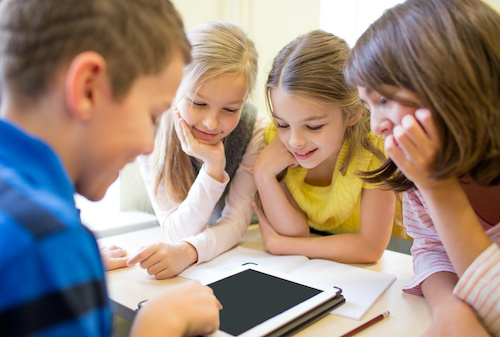
A purposeful approach to tech integration
Key points:
Technology and education go hand-in-hand nowadays, which means it’s more important than ever before to ensure tech is used purposefully within the classroom. With students and educators each accessing 40+ tech tools each year, there’s a real risk of getting lost in the technology at the expense of developing critical soft skills like communication and collaboration.
The amount of time we spend on devices outside of the classroom further exacerbates this challenge. Students as young as 8-12 years old are already spending an average of 5.5 hours per day on screens (excluding time in the classroom).
Fortunately, there are a number of ways educators can use technology to foster a sense of community and help keep students engaged with one another and with their lessons. As a former teacher who has transitioned to working in tech, I’ve observed a number of opportunities for educators to create bridges between screen time and the development of collaboration, communication and content creation skills.
Fostering communication
With so much screen time, it’s no wonder we are spending less time talking to each other. Texting and messaging have replaced face-to-face conversations and phone calls, and the result is poor communication skills. In fact, less than half of employers felt that graduates are very prepared in oral communication. But there are a number of classroom technologies available today to help drive in-person conversations.
By using whole-classroom solutions like interactive flat panels (IFPs) and video conferencing, educators can inspire students to interact with one another – both in the physical classroom and beyond. Whether it’s bringing small groups of students together to problem-solve or play an educational game, inviting a subject matter expert to remotely join a class via video, or taking a virtual field trip, these tech tools are sure to drive engagement and inspire conversations.
Fortunately, most edtech solutions are plug-and-play, but I also want to emphasize how important professional development is when using these tools – especially IFPs. In my own experience, they often end up being underutilized, but with the training in place, they can lead to highly interactive learning moments. Knowing how to use classroom tech to its fullest will lead to optimal learning outcomes.
Driving collaboration
Collaborative learning is a powerful tool for enhancing student engagement, motivation, and overall learning outcomes. There are a number of technologies available today designed with classrooms in mind and that can build collaboration among students and their teachers. These tools can be used to help ensure technology is activating collaboration rather than hindering it.
Christie Elementary in Plano, Texas has done a remarkable job of this. They use an app called Kami, which supports real-time collaboration with annotation tools. With the app, students can sketch pictures of their learning while reading a poem or designing a science project, and can collaborate with classmates to show mastery of the content.
When using the app with only a Google Chromebook, students struggled with making mistakes and illegible marks, which caused frustration because they weren’t able to easily express their ideas to one another. Once educators equipped students with styluses, the learning experience transformed. Students were able to be more precise with showing their ideas to others compared to only using their finger on the screen, and they could collaborate seamlessly on each other’s devices to share ideas. With the right combination of technology for collaboration, educators found students retained more information and were more enthusiastic about working together.
Empowering content creation
Content creation exercises also provide innovative ways to empower the communication, collaboration, and technological skills that students need to succeed in school and beyond. Considering that a survey conducted by The Harris Poll and Lego revealed that of 3,000 kids in the U.S and U.K., nearly 30 percent ranked YouTuber as their top career choice, teaching through enabling students to be creators is in line with their preferences, too.
I’ve worked with districts that are creating entire studios for both their staff and their students using plug-and-play tech (e.g. USB-connected webcams, content cameras, key lights, and microphones) that ensures more time for creating, with less time needed for troubleshooting. One school district in Georgia is building out podcast stations for its students. Educators are then incorporating the creation of podcasts into their lessons. This approach not only ensures students learn the subject at hand – it also helps them build communication and technical skills, with the potential to inspire students to start podcast stations of their own outside of school.
The bottom line
Technology in the classroom can either inspire learning or create challenges, depending on how it’s used and whether it leads to better learning outcomes. Fortunately, with a thoughtful approach, screen time can easily be transformed into opportunities for communication, collaboration, and creativity.
